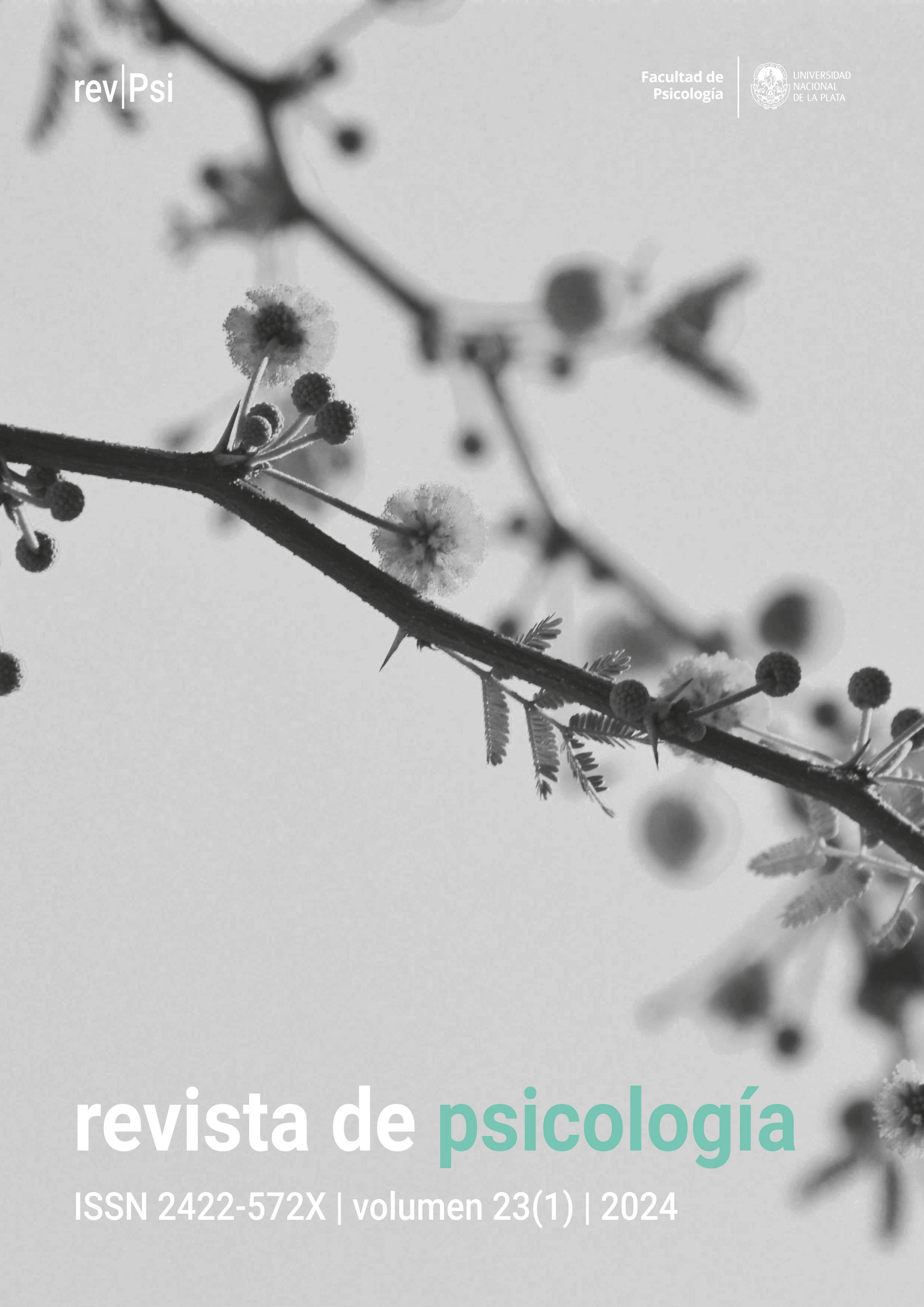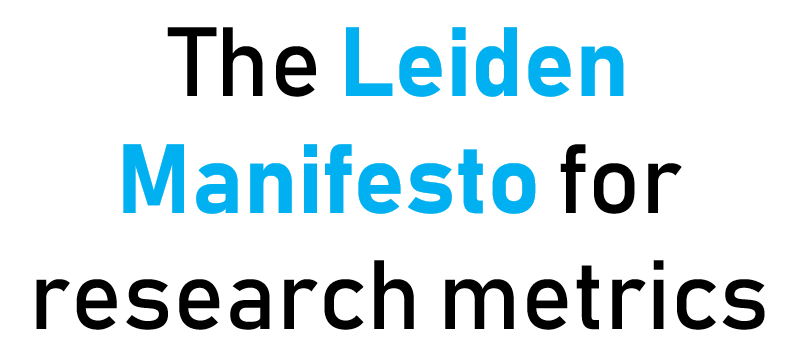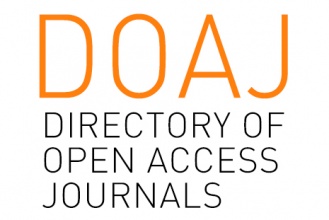A longitudinal study of parental responsiveness from the musical dynamics of early triadic interactions
DOI:
https://doi.org/10.24215/2422572Xe145Keywords:
early triadic interactions, parental responsiveness, musical dynamics, early joint actionAbstract
The present work explores the communicative mediators involved in the interactions between adult-baby-object during the first year of life. To do this, we analyzed the interactions between two mothers, their respective babies and a maraca at 6, 9 and 12 months of age, paying attention to the instances of early joint action, the musical dynamics of the interaction and the indicators of parental responsiveness observed. Results evidenced the individual differences between the styles of interaction of both triads, as well as the various forms of adult responsiveness observed and how these affect the communicative responses of children, which were of increasing complexity. Based on this, we conclude that parental responsiveness could promote children’s social and communicative development, by offering adjusted responses within early interactions.
Downloads
Metrics
References
Alessandroni, N., Moreno-Núñez, A., Rodríguez, C. y Del Olmo (2020). Musical dynamics in early triadic interactions. A case study. Psychological Research, 84, 1555–1571. https://doi.org/10.1007/s00426-019-01168-4
Bornstein, M. H., Tamis-LeMonda, C. S., Hahn, C.-S. y Haynes, O. M. (2008). Maternal responsiveness to young children at three ages: Longitudinal analysis of a multidimensional, modular, and specific parenting construct. Developmental Psychology, 44(3), 867-874. https://doi.org/10.1037/0012-1649.44.3.867
Brady, N., Warren, S. F., Fleming, K., Keller, J. y Sterling, A. (2014). Effect of sustained maternal responsivity on later vocabulary development in children with fragile X syndrome. Journal of Speech, Language, and Hearing Research, 57(1), 212-226. https://doi.org/10.1044/1092-4388(2013/12-0341)
Brownell, C. A. (2011). Early developments in joint action. Review of Philosophy and Psychology, 2, 193-211. https://doi.org/10.1007/s13164-011-0056-1
Cerullo, S., Fulceri, F., Muratori F. y Contaldo, A. (2021). Acting with shared intentions: A systematic review on joint action coordination in autism spectrum disorder. Brain and Cognition, 149, 105693. https://doi.org/10.1016/j.bandc.2021.105693
Costall, A. (2013). Things that help make us what we are. En G. Sammut, P. Daanen y F. M. Moghaddam. (Eds.), Understanding the self and others: Explorations in intersubjetivity and interobjectivity (pp. 66-76). Wiley-Blackwell.
Demuth, C. (2013). Protoconversation and protosong as infant’s socialization environment. Cross-Cultural Psychology: An Africentric Perspective, 13, 232-256.
Dimitrova, N. (2020). The role of common ground on object use in shaping the function of infants’ social gaze. Frontiers in Psychology, 11. https://doi.org/10.3389/fpsyg.2020.00619
Eshel, N., Daelmans, B., Mello, M. C. D. y Martines, J. (2006). Responsive parenting: interventions and outcomes. Bulletin of the World Health Organization, 84, 991-998. https://doi.org/10.2471/blt.06.030163
Fernald, A. (1989). Intonation and communicative intent in mothers’ speech to infants: Is the melody the message? Child Development, 60(6), 1497-1510. https://doi.org/10.2307/1130938
García, M. M. R. (1993). La influencia del habla de estilo materno en la adquisición del lenguaje: valor y límites de la hipótesis del input. Anuario de Psicología, 57, 45-64.
Gergely, G., Egyed, K. y Király, I. (2007). On pedagogy. Developmental Science, 10(1), 139-146. https://doi.org/10.1111/j.1467-7687.2007.00576.x
Gutiérrez, M. y López, F. (2005). Interacción verbal madre-bebé: responsividad e intencionalidad. Revista Mexicana de Psicología, 22(2), 491-503.
Cooke McKay, I. (2019, noviembre 26). Infant directed speech (Language development) [Vídeo]. Youtube. https://www.youtube.com/watch?v=c-pWi1J1Z8c
Malloch, S. (1999). Mothers and infants and communicative musicality. Musicae Scientiae, 3(1), 29–57. https://doi.org/10.1177/10298649000030S104
Malloch, S. y Trevarthen, C. (2009). Communicative musicality: Exploring the basis of human companionship. Oxford University Press.
Marrone, M. (2001). La teoría del apego. Psimática.
Moreno-Núñez, A. (2021). Cuerpo, proximidad e interacción: algunas ideas sobre la acción del adulto en el desarrollo. En N. Alessandroni y M. C. Piro (Eds.). Cuerpo, época y presentaciones sintomáticas actuales (pp. 137-149). EDULP - Editorial de la Universidad Nacional de La Plata.
Moreno-Núñez, A., Fernández-Alcaide, A. y Martín-Ruiz, N. (2021). El desarrollo de las interacciones triádicas tempranas. Revista de Psicología. https://doi.org/10.24215/2422572Xe088
Moreno-Núñez, A., Rodríguez, C. y Del Olmo, M. J. (2015). The rhythmic, sonorous and melodic components of adult-child-object interactions between 2 and 6 months old. Integrative Psychological and Behavioral Science, 49(4), 737–756. https://doi.org/10.1007/s12124-015-9298-2
Moreno-Núñez, A., Rodríguez, C. y Del Olmo, M. J. (2017). Rhythmic ostensive gestures: How adults facilitate infants’ entrance into early triadic interactions. Infant Behavior and Development, 49, 168–181. https://doi.org/10.1016/j.infbeh.2017.09.003
Prior, J. y Van Herwegen, J. (Eds.). (2016). Practical research with children. Routledge.
Rączaszek-Leonardi, J., Dębska, A. y Sochanowicz, A. (2014). Pooling the ground: understanding and coordination in collective sense making. Frontiers in Psychology, 5, 1233. https://doi.org/10.3389/fpsyg.2014.01233
Rodríguez, C. y Moro, C. (1999). El mágico número tres. Cuando los niños aún no hablan. Paidós.
Rossmanith, N., Costall, A., Reichelt, A. F., López, B. y Reddy, V. (2014). Jointly structuring triadic spaces of meaning and action: Book sharing from 3 months on. Frontiers in Psychology, 5, 1390. https://doi.org/10.3389/fpsyg.2014.01390
Rossmanith, N. y Reddy, V. (2016). Structure and openness in the development of self in infancy. Journal of Consciousness Studies, 23(1–2), 237–257.
Palacios, P. (2009). Origen de los usos simbólicos de los objetos en los niños en contextos de comunicación e interacción triádicos [Tesis doctoral inédita]. Universidad Autónoma de Madrid (España).
Shifres, F. y Español S. (2014). Algo más sobre el enlace entre la infancia temprana y la música: el poder expresivo del rubato. En S. Español (Ed.), Psicología de la música y del desarrollo. Una exploración interdisciplinaria sobre la musicalidad humana (pp. 9-43). Paidós.
Solnit, A. J. y Neubauer, P. B. (1986). Object constancy and early triadic relationships. Journal of the American Academy of Child Psychiatry, 25(1), 23-29. https://doi.org/10.1016/S0002-7138(09)60595-1
Tamis-LeMonda, C. S., Bornstein, M. H. y Baumwell, L. (2001). Maternal responsiveness and children’s achievement of language milestones. Child Development, 72(3), 748–767. https://doi.org/10.1111/1467-8624.00313
Tamis‐LeMonda, C. S. (1996). Maternal sensitivity: Individual, contextual and cultural factors in recent conceptualizations. Early Development and Parenting, 5(4), 167-171.
Trevarthen, C. (2008). Conversations with a two-month-old. En J. Raphael-Leff (Ed.). Parent–infant psychodynamics: Wild things, mirrors and ghosts (pp. 25-34). https://doi.org/10.4324/9780429478154-4
Downloads
Published
How to Cite
Issue
Section
License
Copyright (c) 2022 Natalia Duque Fernández, Ana Moreno-Núñez

This work is licensed under a Creative Commons Attribution 4.0 International License.
![]()
Authors who publish in this journal accept the following conditions:
- Authors retain the copyright and assign the right of first publication to the journal, with the work registered under a Creative Commons attribution license (CC-BY), which allows third parties to use what is published whenever they mention the authorship of the work and the first publication in this magazine.
- Authors can make other independent and additional contractual agreements for the non-exclusive distribution of the article published in this journal (e.g., include it in an institutional repository or publish it in a book) as long as they clearly indicate that the work was published for the first time in this magazine.
- Authors are allowed and encouraged to publish their work on the Internet (e.g., on institutional or personal webpages) before and during the review and publication process, as it can lead to productive exchanges and greater and faster dissemination of published work (see The Effect of Open Access ).





































